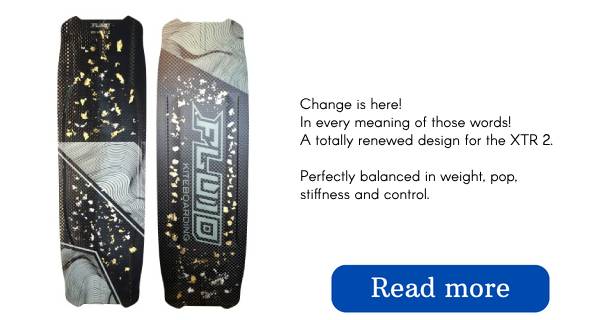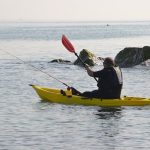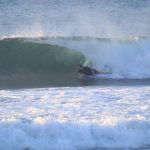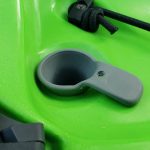Possessing a kayak provides many thrilling opportunities. Investigating strange places and going on overnight camping trips to joining the family for some fun in the sun on a lake.
Picking out a kayak that fits your requirements can be complicated, given the abundance of them accessible, though if you have the right details the task can be simpler.
The purpose of this guide is to be the most comprehensive source of information concerning the selection of a kayak and providing you with a descriptive overview of the process.
This article looks at every factor, such as helping you decide the right kind of kayak for you, noting different aspects, and the advantages and drawbacks of the different substances kayaks are made of.
So let’s take a deep dive…
Choosing Your Ideal Kayak
Let us analyze the various sorts of kayaks and what conditions they are best adapted for paddling.
Quick Note
It is important to remember that it can be difficult to put an exact kayak into one of these categories. Different businesses don’t always use the same designations to divide up their kayaks.
For instance, advanced recreational kayaks possess the same components and are equal to the basic touring kayaks in terms of performance. In the same way, some superior touring kayaks begin to look almost like sea kayaks.
Adding to what has been said, there are certain features that usually remain constant in each type.
Sit on top vs Sit in Kayaks
Taking a look at sit-on-top and sit-in kayaks is one of the best ways to start narrowing down your choices of which kayak to pick. Although they share similarities, each has its own advantages and disadvantages.
When picturing a kayak, the majority of people will imagine a kayak with a seated inside. It’s the traditional style people are most familiar with. In recent times, the sit-on-top type of kayak has become increasingly favored due to its convenience.
Sit on top
- More stable
- Easier to get on and off of (even in the water)
- Self-bailing and easy capsize recovery
- Heavier
Ideal for: Casual use in warm, sheltered water. Fishing, swimming, and diving. Families.
Not suited for: Cold paddling conditions. Exposed water. Long-distance trips.
Sit in
- Shelters paddlers from cold water and wind
- Faster
- More control while paddling
- Harder capsize recovery
Ideal for: Cooler water. Paddlers who don’t want to get wet. Paddlers who want a faster kayak.
Not suited for: Diving and swimming. Paddlers that find cockpits too restricting.
Recreational Kayaks
- Length: 9-12 feet
- Width: 27-36 inches
- Storage space: Minimal
Ideal for: Short trips on calm water. Entry-level paddlers. Paddlers on a budget.
Not suited for Multi-day trips. Waves or rapids.
It is widely accepted that kayaks for recreational purposes are the least expensive and most favored type of kayak.
Touring Kayaks
- Length: 12-16 feet
- Width: 23-27 inches
- Storage space: Moderate to ample
- Good balance of performance and stability
Ideal for: Full-day or multi-day trips. Kayak camping. Long distances. Moderately rough water.
Not recommended for: May be too much for those who paddle recreationally.
These kayaks offer an excellent balance between speed, steadiness, and ease. Recreational kayaks are slower and move less efficiently through the water than them. Many kayaks have either a rudder or a skeg installed to assist them in maintaining a straight course.
They can only be discovered in the old-fashioned, seated form.
Sea Kayaks
- Length: Longer than 16 feet
- Width: 23 inches or less
- Storage space: Ample
- Very fast and efficient
Ideal for: Excels in rough open water. Long distance and multi-day excursions.
Not suited for: Narrow, winding rivers. Overkill for small ponds and lakes.
Sea kayaks are quite different from recreational kayaks. These kayaks are constructed to traverse the water with the utmost proficiency and to withstand the uncertain circumstances that come with the activity of open-water canoeing.
Inflatable Kayaks
- Length: 10-15 feet
- Width: 32-40 inches
- Storage space: Minimal to moderate
- Ultra-portable and easy to store when not in use
- Higher-quality inflatables can be surprisingly durable
Ideal for: Paddlers low on storage space. Having your kayak in your vehicle so you’re able to go out kayaking on a whim. Hiking into remote paddling locations. Families.
Not suited for: Rough or exposed open water conditions.
An inflatable kayak could be a beneficial selection if you possess restricted storage area or require a kayak that is easy to move. Most pack away into a large duffle bag.
Fishing Kayaks
- Length: 9-14 feet
- Width: 30-36 inches
- Storage space: Varies
- Specialized features for anglers
Ideal for: This is perfect for those who are serious about fishing, as well as those who enjoy a casual outing on the water and like to fish when the mood strikes.
Not suited for: Long distance trips or rough conditions.
Fishing kayaks are equipped with features which make it simpler for fishermen. A large selection of types is available, including both sitting-in and sitting-on-top models, as well as rigid and inflatable styles. Similarly, the performance of single fishing kayaks can differ drastically.
In general, fishermen prefer using a sit-on-top boat for easy access to their supplies and the ability to move around easily. People who are angling in difficult circumstances like cold or choppier waters may favor a sit-in model.
No matter the situation, fishing kayaks generally have broad hulls allowing for steadiness when reeling in a catch.
Whitewater Kayaks
- Length: 5-10 feet
- Width: 24-28 inches
- Storage space: Minimal
Ideal for: Fast-moving water. Ocean surf.
Not suited for: Long-distance trips.
Whitewater kayaks are designed for navigating through turbulent waters and waves, and are distinct from other kayaks.
They may be small and chunky, but their greatest asset is that they are nimble, making them perfect for quickly avoiding objects while moving quickly down a river. Going quickly is not a major problem as you are mostly moved by the liquid.
Types of Kayak Materials
Wooden Kayaks
The majority of boats are constructed “by oneself” using the stitch-and-glue technique or strip-construction. The possibilities of developing a strip-built boat are almost boundless, coupled with the accessibility of kits for the stitch/glue building process, even those not possessing an expert level of woodworking can construct a boat.
You can have someone else take care of it for you.
Boats made from wooden decks or hulls are usually fitted with a coating of fiberglass, resin and varnish for additional strength and protection – making them as resilient and long-lasting as other manufactured composite fabrics, but significantly lighter than other vessel fabrications.
Pros/Cons of Wooden Kayaks
The strip-built boats are aesthetically pleasing. This procedure facilitates a practically inexhaustible number of designing choices. A wooden kayak with a fiberglass and varnish finish can be as sturdy as a vessel made of composite materials, while being significantly more affordable.
And up to 25%, and in some cases more, lighter than a comparable fiberglass boat (weighing approximately 20 pounds less). It is thought by some that wooden kayaks are just as strong as those made from Kevlar or Graphite composites.
The difficulty of creating wood boats is that it is necessary to possess the proficiency to make it by hand or pay somebody to do it (which will cost money!). Nonetheless, Stitch-and-Glue models necessitate fewer carpentry techniques and create a vessel that you constructed on your own that is suitable for cruising open waters.
Waterfalls and boulders are not the most ideal conditions for paddling, so it is best to stick to gentler waterways and rivers.
Composite/Glass Construction Kayaks
Synthetic fabric construction has many forms, such as the kind we typically refer to as “fiberglass”, and others made out of aramid fabric (like Kevlar™) and graphite fibers. The methods used for these different materials are similar.
Fabrics are assembled in layers, either all together or mixed with other materials, and then shaped into a form. Fiberglass boat molds have an outer coating of colored gel which will be the outer finish of the completed kayak.
In some cases, foam panels and gauze are used in the interior of the deck and hull of a vessel to provide extra support. The full set of layers in the mold are sealed off with a vacuum and left to harden in order to produce a part of the deck or hull independently.
The two pieces are joined to form the entire kayak.
Pros/Cons of Composite/glass Kayaks
Fast and responsive! The rigidity of the body of the kayak leads to these being the quickest of the types of kayaks built. The hulls can generally take a beating, except for direct impacts that could result in damage or small scratches that may appear, but won’t slow down the ship.
Incorporating multiple layers (such as fiberglass alongside graphite) offers a wide range of weight/strength possibilities to think about.
From the choices between fiberglass, aramid/Kevlar, and graphite, all are heavier than rotomolds, yet graphite outweighs the other fabrics and it is also the priciest. You should anticipate shelling out a lot more money when you exchange fiberglass for graphite and lose weight.
Repairs to composite vessels are just as feasible as those made to wooden boats in a remote location.
Rotomolded Kayaks
Polyethylene powder is placed into a cast, heated and spun around to create a full, single-piece kayak. Most boats are composed of a type of molecular structure in the form of a line while others are made of interwoven poly molecules.
Pros/Cons of Rotomolded Kayaks
Your choices include these boats, which are the most affordable but the heaviest. The weight and cost of the item will be affected by the type of plastic that is used in the manufacture of it. Expect the hogs sold at bargain stores to be very heavy and difficult to maneuver in the water.
Rotomolds are not as detailed as other methods, yet the performance of some parallels that of others; the disadvantage is that they will be heavier, but they will be much cheaper.
Roto’s boats are particularly tough and can easily sail through places containing hazardous rocks, withstanding the impacts and quickly continuing on their voyage. Despite its implications, scratches do bring with them small fuzzballs and ridges on the boat’s outer layer causing the speed of the vessel to be affected while damage to the body of the ship such as punctures or splits can prove to be difficult to mend.
Rotomolds need to be covered with a protective layer if they are exposed to UV rays to keep them from getting destroyed. This should be done on the deck and shell of the item.
This type of plastic boat is prone to having an indentation in the hull or the deck due to too much pressure being exerted, which causes the plastic to soften and become malleable. This typically happens after prolonged exposure to strong heat and UV radiation, or when a boat is tied down too securely to a hard and thin roof rack.
In many instances, the sadness or lack of motivation will go away once they are no longer exposed to the sun, heat, or another type of stress. One can utilize techniques to restore the form.
Thermoform Kayaks
A top layer of acrylic is blended with ABS (a plastic alloy containing styrene) into a single sheet, which is then heated and drawn across a mold – a different method to forming plastics by use of pellets.
This process of separating the hull and deck production is then followed by joining them together to fashion a boat similar to what is seen with fiber composite boats.
Pros/Cons of Thermoform Kayaks
Visualize a kayak that almost has the same lightness as a composite one and that is almost as resilient as a rotomold one, and that costs less than either of the two – a thermoform kayak should then come to mind.
The glossy gleam of the vessel/body of a thermoform boat, combined with the variety of colors available, makes this type of boat a widely popular option for many boaters.
Boats created using thermoforming generally include UV-protected material in the exterior layer. Thermoforms have a tendency to be degraded over a long stretch of time, yet not at all like different types of plastic pontoons, they are typically viable for reuse.
Inflatables/folding Kayaks
In short, inflatables are kayak covers crafted from sturdy polyester fabric which give the boat form and durability. The drop-stitch building process allows for the application of greater internal pressures, leading to the reinforcement of the hull and deck.
Boats that are collapsible usually have a canvas or nylon covering that is placed on top of either a wooden or aluminum frame. Recent advances in technology have made it possible for designers to build and construct powerful kayaks with interconnected sheets and folding designs.
Pros/Cons of Inflatables/folding Kayaks
Many paddlers prefer this option as they can take their kayak with them when they go on trips and don’t have a lot of room to store a long kayak. The material used to construct the decks and hulls of foldable wooden and aluminum boats is just as durable as the solid-shelled variety, and they normally come with kits for fixing them.
Other varieties of collapsible vessels have joined the gathering of foldable kayaks, providing lightweight options for transporting and storing.
Kayaks that can be folded will usually be more expensive than those constructed out of rigid fiberglass. Today’s folding kayaks are highly streamlined and almost as stable as standard hardshells. They are just slightly more susceptible to punctures. They necessitate more upkeep due to the large number of framework elements.
What frequency do you plan to paddle? Do you keep the boat assembled and ready to go for frequent use, or do you only assemble it when you go out for a paddle every now and then?
How often do you intend to travel with it? Inflatables are also advantageous because they can easily be taken with you on the go and can be conveniently stored.
This varies from basic tubes strung together in the form of a kayak/canoe to more detailed and extended patterns of air chambers for enhanced strength and form upon inflation.
The stability and safety of an inflatable watercraft totally relies on the air inside it, so any holes are a very serious matter. Most inflatables usually have a wide beam, and thus are restricted to a certain kind of use. Despite their spaciousness, there isn’t always a lot of storage space for equipment.
in conclusion
And that’s a wrap, folks! We hope this guide has helped you narrow down your options and find your perfect kayak match. Remember, kayaking is a thrilling and rewarding experience that can take you to some of the most breathtaking places on earth.
So whether you’re a seasoned pro or a newbie, choosing the right kayak is key to unlocking the full potential of your adventure.
By taking into account factors like your skill level, preferred paddling environment, and budget, you can find a kayak that suits your needs and ensures a safe, enjoyable ride every time.
Don’t forget to also consider additional features like storage capacity, comfort, and maneuverability to truly customize your kayaking experience.
With so many great kayaks on the market today, the sky’s the limit when it comes to your kayaking journey. So go forth, explore, and paddle your way to your next unforgettable adventure.
Happy kayaking!




